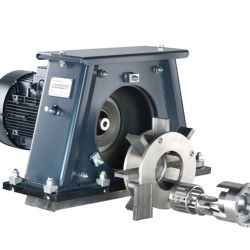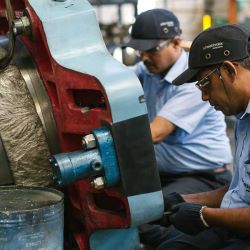Investing wisely – how to choose the right shot blasting machine
When you invest in a new machine, you want to know it’s going to work. You want to know it’s going to deliver the finish that you need at a reasonable cost and with the cycle time that suits your surrounding processes. And you’re not the only one – all those factors matter to us too, because we want to get it right first time.
At the Wheelabrator Customer Application Lab in LaGrange, GA, USA it is our job to figure out which machine is right for each customer, and having run over 5,000 trials we’ve got a wealth of experience and data to back up our solutions.
The selection process – matching component to machine
So how exactly do we go about selecting the right machine for a specific part or component? Well, there are several things that we take into consideration right at the beginning which help us determine and recommend the right solution.
Our process starts with a customer who has a need. That could be anything from paint stripping to profiling, and what they need to do will of course affect which machine will work best for them. The next step is to determine the size of the part or component and the production requirements – so how many parts need to be processed per hour or per day. Last, but by no means least, the budget also needs to be considered.
We always ask the customer for examples of their parts, fabricated components, and so on – and if they are already blasting in-house, we ask for parts that have already been processed. This helps us gain a more accurate view of the finish, surface profile, or surface preparation they require.
Generally, once we know all these things we already have a good idea of what the customer will need. Our lab industry experts have nearly 70 years of experience, and when you consider the 5,000 trials we’ve already run and stored in our database, it’s very rare that we’ll be seeing something for the first time.
The testing process
Of course, the biggest help to a customer in choosing the right machine is actually seeing what it can do. We have dedicated machines in our LaGrange customer application lab, along with around 80 tons of different abrasives, so that we can run trials on parts and components to recommend the right machine solution.
Whenever we can, we try to get customers to observe the trials on their parts. This is helpful for us, because we can make sure we’ve understood the exact surface preparation they require. After all, what we think is good and what they think is good could be different – we need to make sure what we’re doing is right for them.
These trials allow us to hit upon not just the right machine, but the right type of abrasive, the running times, and all other variables that determine the resulting surface treatment, profile or finish on their part.
Why bother testing?
You might be thinking that this process seems quite involved, but a short example will suffice to illustrate why it can make all the difference to the end results for the customer.
We were once in a competitive bid to provide a monorail wheelblast machine. We believed that a 12-wheel machine was needed to meet the requirements of the customer, but another company had suggested an 8-wheel machine, which would cost less.
To demonstrate why we thought a 12-wheel machine was necessary, we replicated both the 8-wheel and the 12-wheel set-up. We put two identical parts through the two different machines and the results spoke for themselves – the 12-wheel machine produced the finish the customer required in one go.
Without those tests, the customer’s decision may have come down to budget, but testing showed that the additional outlay for the 12-wheel machine would be a worthwhile investment, avoiding costly adjustments later or longer-than-planned processing times.
Ultimately, testing means that you won’t get any unwanted surprises after a machine is in place – you already know it does what you need it to do – and we think that peace of mind is worth it every time.


